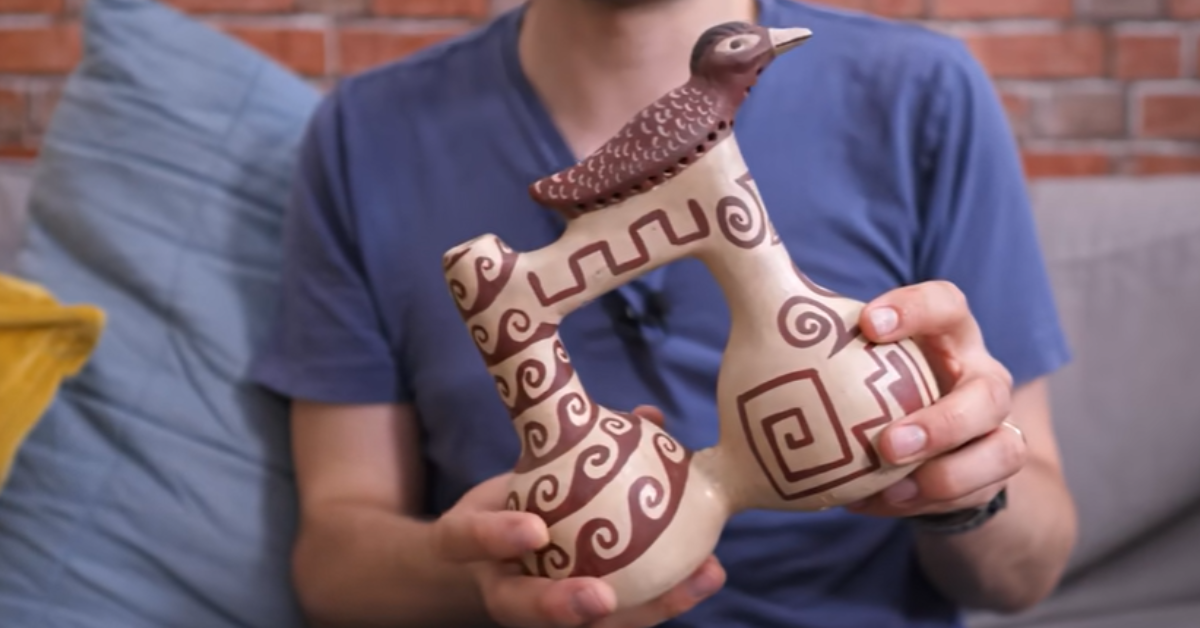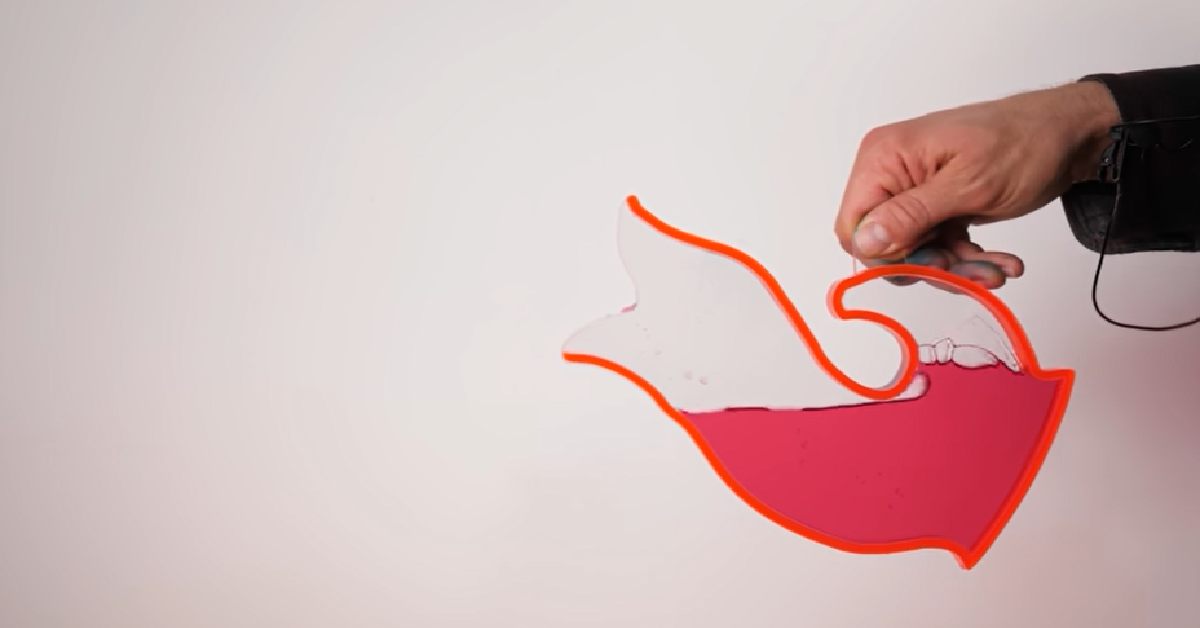Man Explains The Science Behind Peruvian Whistling Vessels
They can seem like magic, but there’s a science to how they work.
Steve Mould is a hilarious video blogger and author who loves to talk to us about science. He decided to explore the physics behind Peruvian Whistling Vessels and we are all ears.
He utilized X-rays and an array of other forms of technology to handle the task. This was his way of testing out a certain theory, a theory that he is explaining in full to anyone who cares to listen.

“My theory is that as you tip the thing, water moves from this compartment to this compartment. As this compartment fills with water, it forces air out through some kind of whistle that’s hidden inside the head. But if air is free to leave the vessel via the whistle, then surely as you tip the thing, you should just get a continuous whistling sound, but you don’t,” Mould says.
He wanted his chance to take a closer look at what was going on inside of the vessel in question. Of course, he could have just smashed it open but he decided to take a different approach. He spoke with the good folks at Creative Electron. This California company works with a variety of clients when it comes to creative imaging.

You won’t believe the clarity of the images that they have found but this video will give you the chance to see them for yourself. One of the vessels was also sliced in half by Mould.
One half was covered up with clear plastic, which gave him the chance to see what is going on. This gave him the chance to make more substantive claims about what takes place.

“But anyway, in support of the hypothesis that a warbling sound requires a narrow channel through the whistle and a wide connecting pipe …actually, in the x-rays, you can compare the whistle parts and see that actually they seem to have very similar geometry. So it’s not a difference in the rate of flow of air. It’s a difference in surface tension effects in the connecting pipe,” Mould continues.
Trust us on this one, this is something that you are going to want to see for yourself. Check out the video below:
SKM: below-content placeholderWhizzco for DOT

